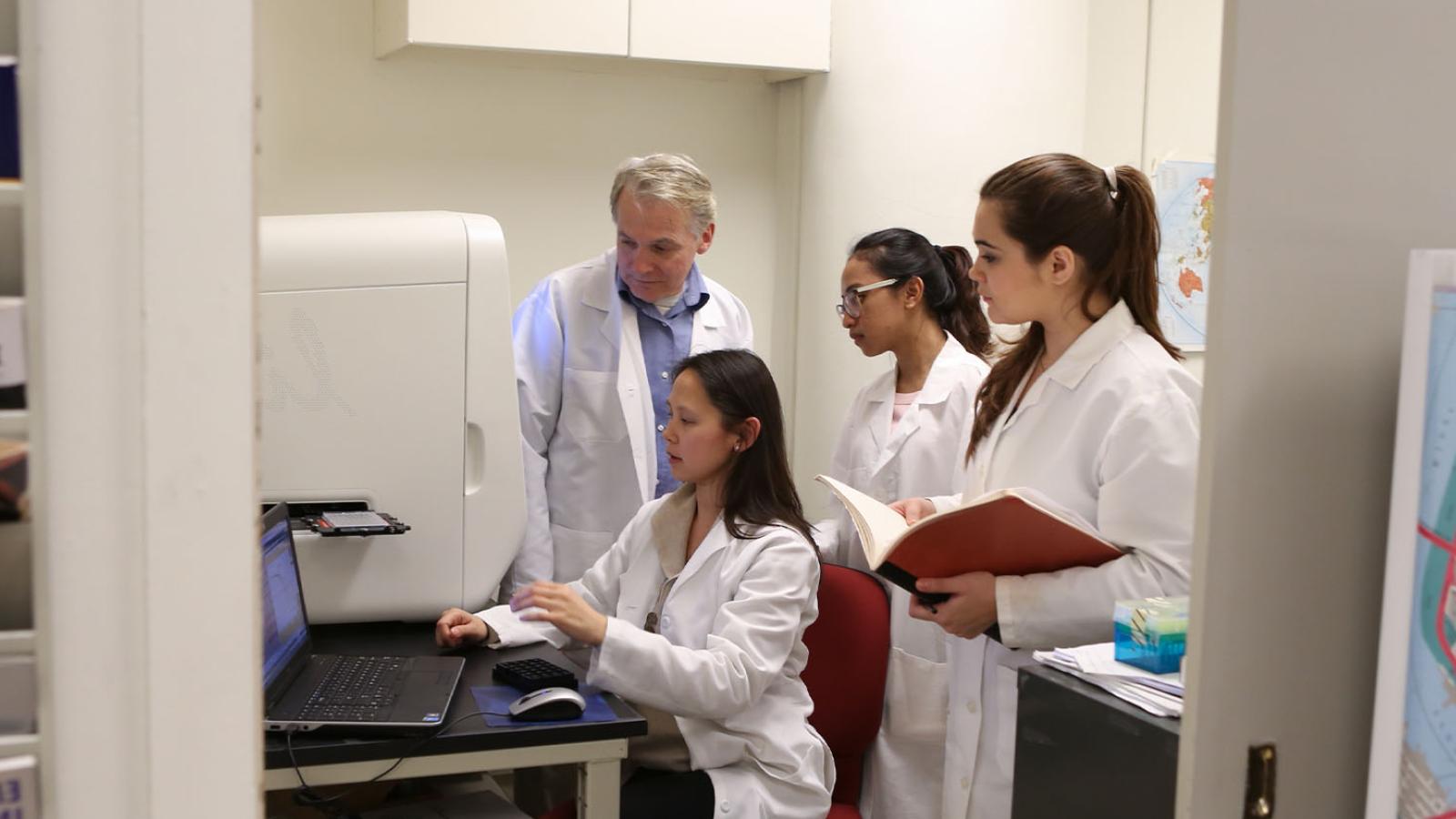1935
The Haskins Laboratories had its beginnings at General Electrical and Union College with four young and innovative scientists of diverse talents: Caryl Haskins, a physicist and geneticist, Franklin Cooper, an electrical engineer, Paul a Zahl, a mammalian biologist, and Seymour Hutner, then a graduate student at Cornell in microbiology and biochemistry. They determined as a team the feasibility of General Electric Company’s plan to build million-volt X-ray machines for cancer treatment and for genetics research. Part of their work was done at the Graduate schools of Harvard and M.I.T.
1939
The Haskins Laboratories was established in Schenectady, NY.
1941
The Haskins Laboratories moved to 305 East 43rd Street, New York where it remained for 28 years. Caryl Haskins elected President of the Carnegie Institution and Director of Elden Pont de Nemours, while still Director of The Haskins Laboratories.
1970
The Haskins Laboratories split into two divisions, the Microbiology Division, under Seymour Hutner affiliated with Pace University, and the Speech Recognition and Cognition Division affiliated with Yale University.
1977
Seymour H. Hutner retired as Director of the Haskins Laboratories at Pace University, but continued working at the Labs until 1998. Cyrus Bacchi was appointed the new Director.
1977-2006
Under the direction of Cyrus Bacchi the laboratory received continuous funding from NIH to support research aimed at the chemotherapy of African Trypanosomiasis. In collaboration with Marion-Merrell-Dow this work resulted in the development of Efflornithine, which is the first new drug to treat the disease in over 60 years.
2006
Cyrus Bacchi retired as Director but continues to work as an emeritus research professor at the Haskins Laboratories. Nigel Yarlett was appointed as the new Director
About Seymour Hutner
Seymour Hutner earned a B.S, degree from C.C.N.Y. in 1931 and a Ph.D. from Cornell University in 1937. He was a pioneer in the biochemistry of protozoa and legendary for his ability to attract students. Many successful scientists began as high school or college volunteers in his laboratory, including two Nobel laureates, Joshua Lederberg and David Baltimore. The atmosphere in the laboratory was always informal and sometimes chaotic. Students learned from his broad knowledge of chemistry, metabolism, and exemplary writing skills. All this was delivered with a mix of admonition, unassuming common sense, and irreverent New York humor. Seymour was an extraordinary teacher, who inspired students and taught them that unconventional thinking could lead to important discoveries. The number of students he inspired to go into successful careers in medicine or science was monumental and most major universities boast a Haskins Laboratories - Seymour Hutner graduate. He was a leading figure in the establishment of protozoology as a biochemical research field, and in the creation of The International Society of Protozoologists. If the history of science is marked by major breakthroughs in particular fields of knowledge, then Seymour Hutner’s place is in the forefront of how to develop scientists. He has left science, and all of us, the better for his life.
